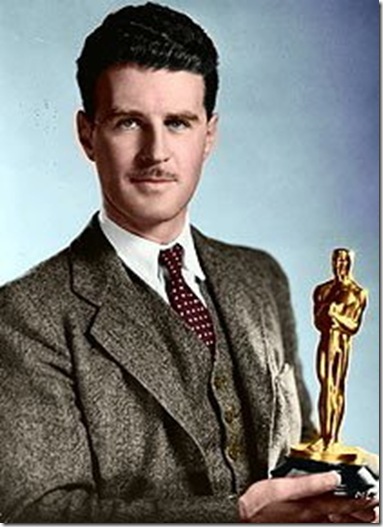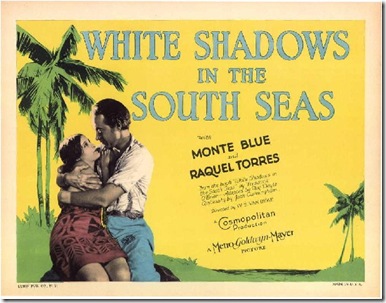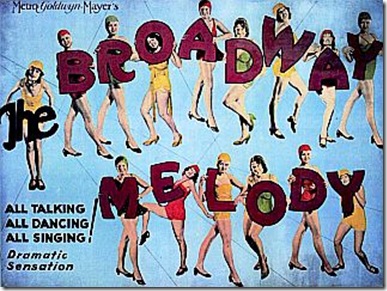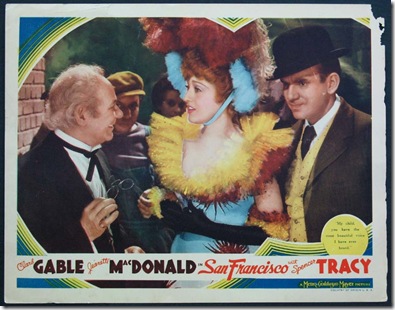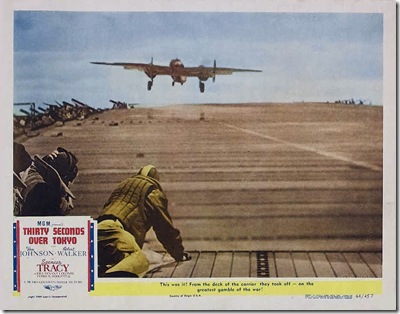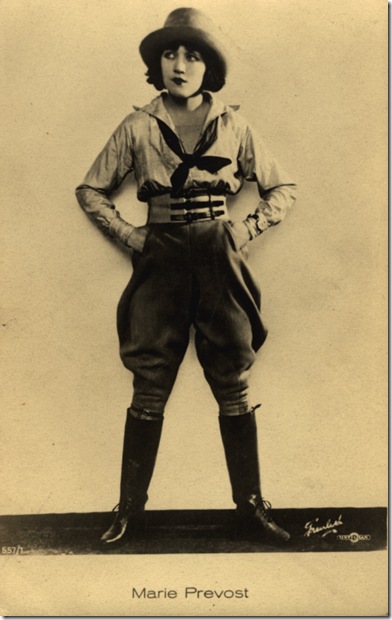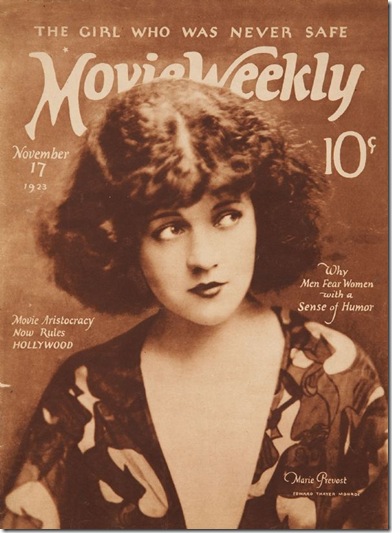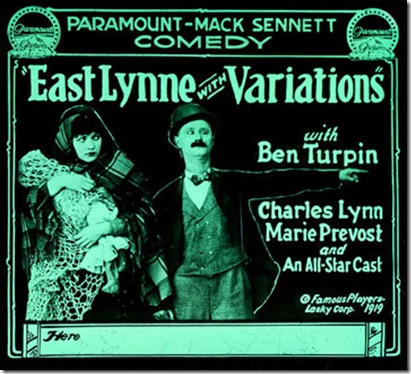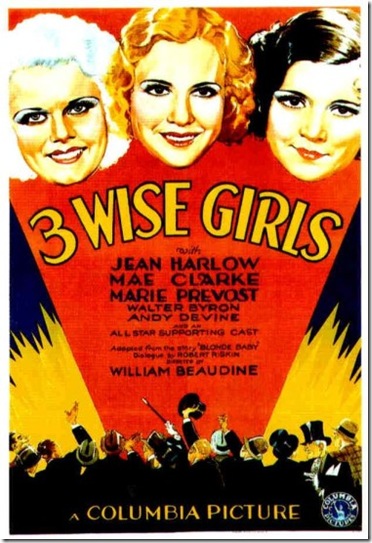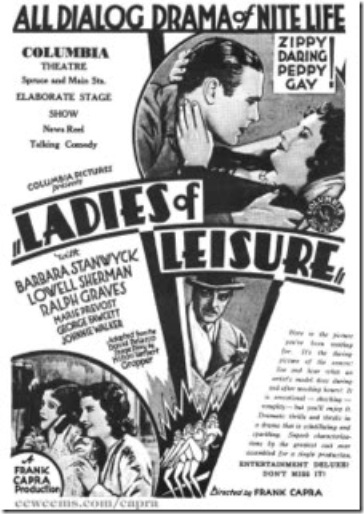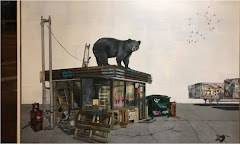OUR HOLLYWOOD HISTORY (10/10)
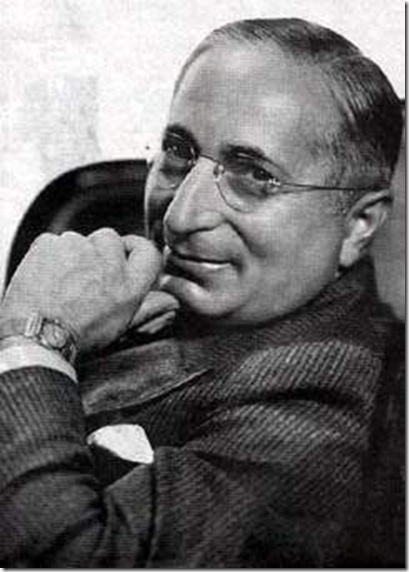
Lazar Meir never knew precisely where he'd been born. It might've been in Russia or the Ukraine, it might've been on a boat to North America. It might've been in Canada or even the United States. Heck, he didn't even know which year marked his birth, let alone the month or the day. What's more he could never prove his parents' name was actually Meir. There simply was no documentation and neither of his parents seemed able to recall the details either.
However he came into this world, Meir spent the first 19 years of his life in Saint John, New Brunswick and so Canada claims him. And he was content to have us do that -- when it suited his purpose.
He never shone in school. Mostly he skipped, to pull a little wagon through the streets, picking up discarded metal for his father's scrapyard. At fourteen, he left school permanently to become the junior partner in a scrap company that now bore his family's adopted name Mayer and Company. His first name was changed as well -- to Louis.
The business did so well, that in 1904, Louis convinced his father to expand to Boston. Here he met a new girlfriend named Margaret, who introduced him to a wondrous new invention called "the moving pictures". Mayer was immediately smitten, both with Margaret, whom he soon married, but also with the possibilities of the movie business.
Together, they pooled their resources and purchased a theatre in nearby Haverhill, Massachusetts that was so rundown the locals had changed its name from "The Gem" to "The Germ". Working day and night for months, assisted only by a man from the nearby lumberyard, and with everyone else, including the local newspaper editor, claiming they were out of their minds, Margaret and Louis renovated the place into a 1000 seat jewel box theatre they called "The Orpheum".
From its opening night, "The Orpheum" revealed what would become Mayer's trademark flair for showmanship and uncanny ability to sense what the audience wanted.
Unable to afford musicians, let alone an orchestra, he installed an organ, starting a trend that would continue well into the 1970's. He only booked "wholesome, family entertainment" and promoted it tirelessly. He also brought in the stars of the films he showed to sign autographs and answer questions from the audience. It was the first time anyone, anywhere had conceived of the "personal appearance".
Audiences flocked to the Orpheum and within 4 years Mayer not only owned every other theatre in Haverhill, he owned the newspaper, firing the editor who had said he couldn't succeed. A year later, he owned an entire chain of theatres throughout Massachusetts and realized he had enough clout to form his own Distribution company. So he did that too.
Finally, in 1915, he formed "The Metro Company" to produce his own "wholesome, family entertainment" and in 1917 moved it to Hollywood so he could film all year round.
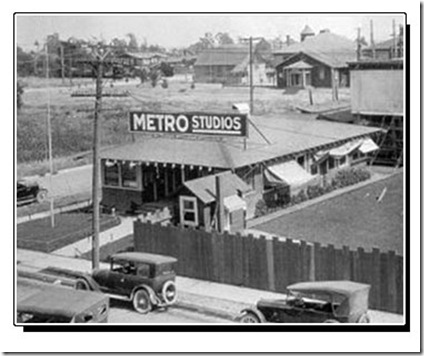
Once in California, Mayer began developing what became known as "The Star System". Years of watching audiences react to actors making personal appearances had taught him what they wanted in the people they paid to see onscreen. And while the other studios hired actors, Mayer found "interesting people" with "interesting qualities" and groomed them for stardom.
By 1924, Metro was making 4 or 5 features a week, all earning a profit. Impressed at his achievements, the Loew theatre chain came to Mayer with their production entity, Goldwyn Pictures, which they needed someone to run. Mayer agreed to merge it with Metro and appended his own name at the end. Metro-Goldwyn-Mayer was born.
It would go on to become the most successful film studio of all time and Mayer would soon be the richest man in Hollywood.
If Mayer had a secret about producing successful films, he didn't try to hide it. In fact, he placed it on the company logo for everyone to see "Ars Gratia Artis" -- Art is beholden to the Artist.
To Mayer's mind, his job was to create a place where artists could do their best work. They were not only his livelihood, they were his family and his place was to protect them at all costs. Hence the Lion in the logo, whose real life counterpart, Leo, lived on the lot with a large staff and accompanied Mayer to important studio functions.
The philosophy seemed to have merit, for in 1926, the top ten films produced in America were all MGM productions. And all of those films had stars either discovered or polished into stardom by MGM, including Ramon Navarro, Buster Keaton, Greta Garbo and Lon Chaney.
Knowing that his stars and their movies needed as much publicity as possible, Mayer founded the Academy of Motion Picture Arts and Sciences in 1927 and created separate studio divisions to train and promote his actors.
And over his career, Mayer probably created more movie stars than all the other studios combined. He also had a reputation for giving newcomers a chance. If they proved they had an inner spark and were willing to work hard, he put them under contract and turned them over to coaches and teachers who diligently built them into what he felt the audience wanted to see.
He began attracting the cream of film talent from Clark Gable, Judy Garland, Mickey Rooney, Joan Crawford and Jimmy Stewart. He supported them with the best writers money could buy and the top directors, not to mention lavish productions that packed theatres all through the Depression.
But he also showed loyalty to his past as well. The man from the lumberyard in Haverhill was put in charge of set construction at MGM and a Broadway actor named Walter Pidgeon was offered a long-term contract the minute Mayer learned he was also from Saint John, New Brunswick.
Mayer also did anything he could for the Silent stars who had helped him build his theatre chain and Metro. He kept dozens working into their sunset years with bit parts and supporting roles, still treating them like stars, often sending his own car to pick them up for work or take them home. On those days, Mayer walked to work so no one else need be inconvenienced.
What's more, Mayer had an entire division of the company staffed with ex-cons who had served time for Forgery. He'd realized that there was no way his stars could sign all the autographs that fans requested, so he brought in forgers who could perfectly mimic their handwriting to personalize each and every fan response. To make sure none of them lent their skills to any other MGM documents, Mayer made sure they only had access to green ink.
If you find a personalized MGM photo on eBay, check the ink. If it's green, the signature is the work of a forger.
But all of Mayer's attention to detail paid off. Audiences felt that they too were part of the MGM family. By the 1940's, the studio boasted without challenge that they were the home to "More Stars Than There Are In Heaven".

And despite earning more than a Million dollars a year ($20 Million in today's dollars) it was well known that he gave most of that away, to build University theatres and synagogues, to support technical research that benefitted the entire industry, and to fund medical research that helped the entire world.
In 1943, with black soldiers in Europe still relegated to their own units or squadrons, Mayer issued an edict that no one who discriminated against another race would any longer find employment at MGM. Segregation of any kind on the lot was equally forbidden.
So how did a man such as this gain the reputation of being "The Meanest Man In Hollywood"?
It might've been because protecting his family sometimes came at a great cost. Some said all he wanted was an appreciation for the special life he had given his stars. Some said he wanted something more.
Mayer was ruthless with those who sullied the name of MGM or put one of its people in jeopardy. He once not only fired an actor who'd been arrested for urinating off a location balcony and closed down the shoot, but he let other studios know they could never borrow another of his stars if they employed him.
He banished directors who refused to do reshoots or chose their own artistic vision over what Mayer felt was best for the script or the stars involved.
In a once famous contract dispute with Clark Gable, he threatened to introduce the actor's wife to his mistress if he didn't reduce his financial demands. And he led the way in assisting Senator Joe McCarthy's "Witchhunt" to expose Hollywood Communists he felt were undermining the values of the American audience.
He also constantly fought with MGM ownership in New York and his own Producers. Many attributed Irving Thalberg's sudden death at age 37 to stress caused by Mayer's relentless work ethic.
He was ruthless in protecting his "family". Perhaps to the point of covering up a murder.
On September 4, 1932, MGM actress Jean Harlow's new husband, Paul Bern, was found dead in their home of a gunshot wound. According to Mayer, the maid had called him at 10:00 a.m. and he had rushed over, getting her to call the police who arrived at 11:00.
But neighbors insisted they'd seen Mayer and Howard Strickling, MGM's Head of Publicity, ushered into the house by Harlow at 7:30. A short time later, an unidentified man showed up just as a white limo with tinted windows carried someone else away.
When the police arrived, they found Mayer and Strickland and the body. They were told Harlow had spent the night looking after her sick mother at her parent's home. There was also a suicide note at the dead man's side, apologizing to Harlow and stating that "this is the only way".
The studio kept Harlow sequestered "at doctor's orders" for several weeks. And by the time she did meet with detectives, Bern's death had been pretty much accepted as a suicide. The police ignored the statements of the neighbors, going with the more precise times that matched the statements made by Mayer and Strickling.
By then, the maid had left town and nobody involved seemed to have any idea about the limo or the unidentified man.
Had Harlow's husband met his end in any other manner but by his own hand?
No one will ever know for sure. Although a reporter, who did some digging 20 years later, discovered two interesting tidbits.
The Maid and her husband were living on a handsome income from some unknown source in a little town back East called Haverhill, Massachusetts.
And the suicide note in Paul Bern's hand -- had been written in Green ink.
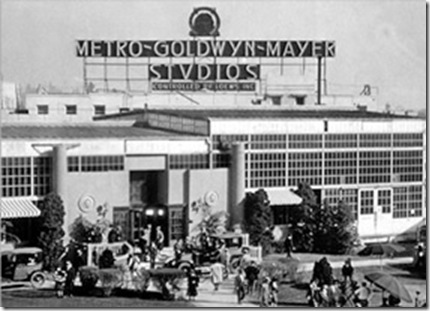
Louis Mayer ran MGM until 1951, and might have done so for longer had he not given his Board of Directors a "Him or Me" ultimatum regarding his company President in New York. Among the last of the projects he put into production was the studio's massive 1952 hit, "Singin' In The Rain", a film which depicted the inner workings of a studio not unlike his own.
Mayer was devastated by his eviction from the family he had so lovingly built and died of Leukemia in 1957, leaving the bulk of his fortune to research on the disease.
Without him to lead it, already eviscerated by anti-Trust suits, the rise of agents who could end-run star contracts and Television, MGM drifted into financial problems and was finally carved up between Ted Turner and the Sony Corporation in 1986.
One of the first things to be removed was the massive steel sign Mayer had erected on its roof in 1926. Perhaps fittingly, it was trucked to a nearby scrapyard.








